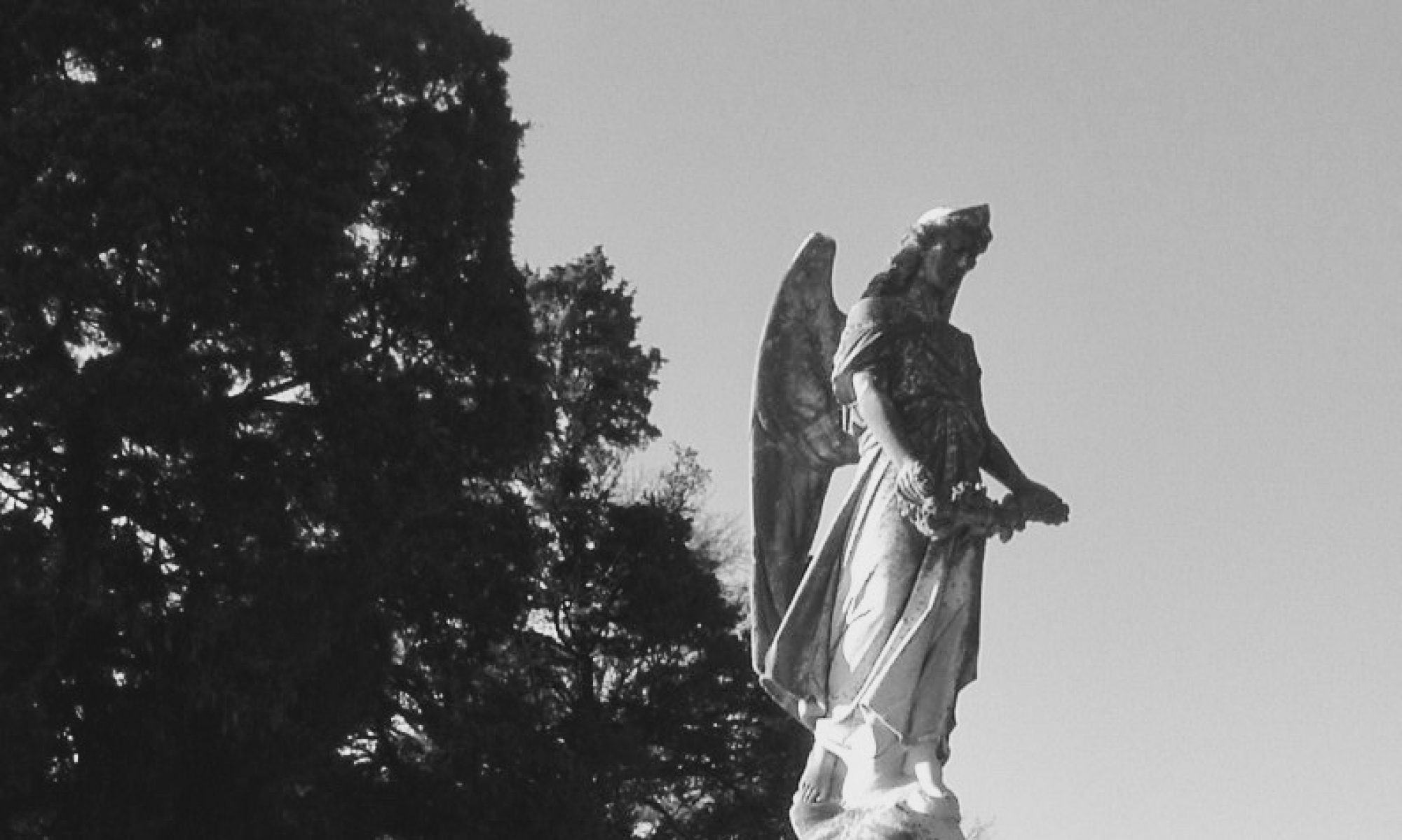We’ve all seen them and we’ve probably posted links to them on Facebook. They come with a seemingly infinite variety of name, superlative and number combinations: “Top 10 Scariest Haunted Places,” “6 Most Terrifying Places to Eat Dinner,” “50 Academically Prestigious Colleges and Universities with Ghosts,” “23 Super-Duper Awesome Most Haunted Prisons.” During Halloween especially, these “articles” sprout like veritable weeds along the sides of the information superhighway.
Usually, these articles simply rehash the same stories about the same locations and rarely do they ever provide much useful information. The author usually puts in just a modicum of research and produces something that is simply entertaining without providing much depth. It’s like a picture of Kim Kardashian that gets retweeted a million times, it provides nothing useful yet it gets passed around ad nauseum to the enlightenment of no one.
I do, however, have to commend Theresa Racer on her marvelous list of haunted places in all 50 states that she posted on her blog.
This is my attempt at one-upping these “articles.” There are countless haunted locations that are rarely covered, yet, in my humble opinion, are fascinating and worthy of a bit more attention.
University of Montevallo
Montevallo, Alabama
My friend, Jenna, had some roommate issues her freshman year at this small Alabama liberal arts college. At night in her dorm room in Old Main Residence Hall Jenna and her living roommate would hear whispering and footsteps both in her room and outside her door. These are not uncommon issues for college freshmen, though Jenna’s problem roommate was a former student who died in a fire in 1908. When the school operated as a women’s college in the early 20th century, a student, Condie Cunningham, caught her nightgown on fire while trying to heat fudge in a chafing dish. She went screaming down the hall and collapsed. She died a few days later in the hospital.
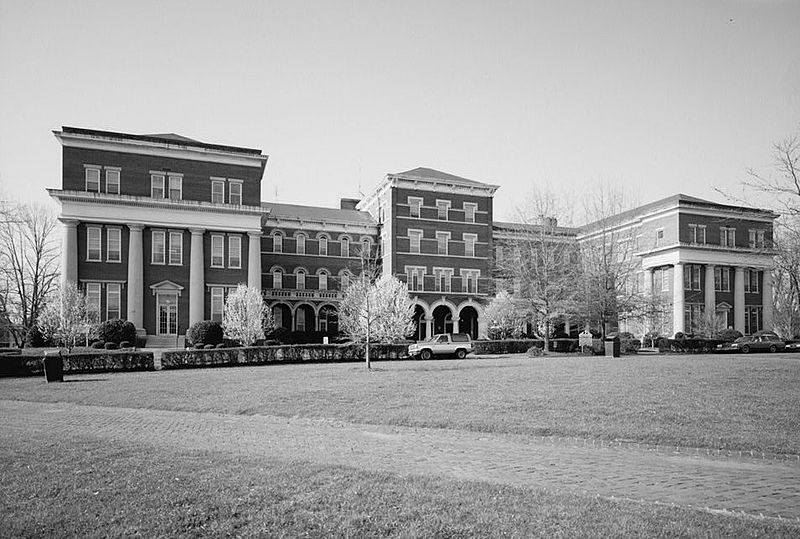
Set in the small, central Alabama town of Montevallo, the university has a wide-ranging roster of revenants, one of which even plays an annual part in one of the university’s most celebrated events: College Night. This annual event pits the students against each other producing competing musicals. Created in 1923, this event is adjudicated from the other side by the spirit of the competition’s founder, Dr. Walter Trumbauer, known affectionately as “Trummy.” According to Jenna, during dress rehearsals and performances, Trummy “gets crazy in Palmer.” Pipes are known to shake backstage and his spirit is seen in and around Palmer Hall where the competition is held. Trummy swings the battens of the curtains onstage during performances of the show that gets his approval. Usually, that show will win.
Among the many other spirits on this campus are Confederate soldiers seen in and around Reynolds Hall. The oldest building on campus, Reynolds was used as a makeshift hospital during the Civil War. Under the watch of Captain Henry Clay Reynolds, the wounded and sick soldiers were abandoned when Reynolds and his men left to defend the nearby Briarfield Iron Works. When he returned, he discovered the sick and wounded had been massacred by Union troops.

Now home to the university’s Department of Theatre, Reynolds Hall is still plagued by spirits from that horrible, war-time event. Another student, Mia, told me she had experiences while working alone in an office on the second floor of the building. The room suddenly grew cold and the blinds started shaking violently. She fled. A visiting artist was walking backstage when he encountered a man in a Confederate uniform. He was later informed that there was no period production going on or re-enactors in the building.
By no means are these the only or most active spirits on campus, many buildings are haunted. These include the mid-19th century King House which may be one of the most active buildings on campus, Hanson Hall with its ghostly housemother and Napier Hall with its marble rolling ghost.
Sources
- Brown, Alan. Haunted Birmingham. Charleston, SC: History Press, 2009.
- Interview with Jenna M., Cherokee, North Carolina, June 2012.
- Interview with Mia S., Cherokee, North Carolina, June 2012.
Halcyon House
3400 Prospect Street
Georgetown, District of Columbia
Just as the recent real estate bubble touched properties throughout the country, this very large, imposing haunted house was also affected. The house was put up for sale for around $30 million in 2008, just as the bubble began to burst, and sold for less than half of that in 2011. Of course, such an eccentric house with the dramatic history that Halcyon House has would probably have trouble selling in good times.
This 30,500 square foot manse comes complete with a “whimsical” library, a large studio space, a ballroom, a chapel, six apartments, a very large garage and a panoply of ghosts. A sealed tunnel in the basement of the house is supposed to have been used as part of the Underground Railroad. In the early 20th century, a carpenter was asked to seal the tunnel and as he did he heard cries and mournful sobs issuing from it. Over the years, various owners have reported apparitions in the house as well as phantom knocking. In one particular bedroom, several people have reported being levitated by an unknown force.

The home’s history is just as dramatic as the hauntings. It was built in the late 18th century by Benjamin Stoddert, the first Secretary of the Navy, and was later owned by the eccentric Albert Adsit Clemons, who claimed to be a nephew of Mark Twain. Clemons extensively remodeled the house and refused to install electricity. Since Clemons death, the house was owned briefly by Georgetown University and recently by a sculptor who, with his wife, lovingly restored the home. During their residence, they claimed to have had no odd experiences within the home’s most historic walls.
Sources
- Alexander, John. Ghosts, Washington Revisited. Atglen, PA: Schiffer Publishing, 1998.
- Cavanaugh, Stephanie. “Centuries of Drama at Halcyon House.” The Washington Post. 30 August 2008.
- Krepp, Tim. Ghosts of Georgetown. Charleston, SC: History Press, 2013.
- Powell, Lewis O. IV. “Haunted Washington, D.C.” Southern Spirit Guide. 22 December 2010.
- Taylor, Nancy C. National Register of Historic Places nomination form for Halcyon House. 3 November 1970.
Island Hotel
373 2nd Street
Cedar Key, Florida
Most people head to Cedar Key to avoid the crowds, though visitors to the Island Hotel may encounter a crowd of spirits. According to a number of sources including the hotel’s website, thirteen—a very appropriate number—spirits walk the halls of this hotel.
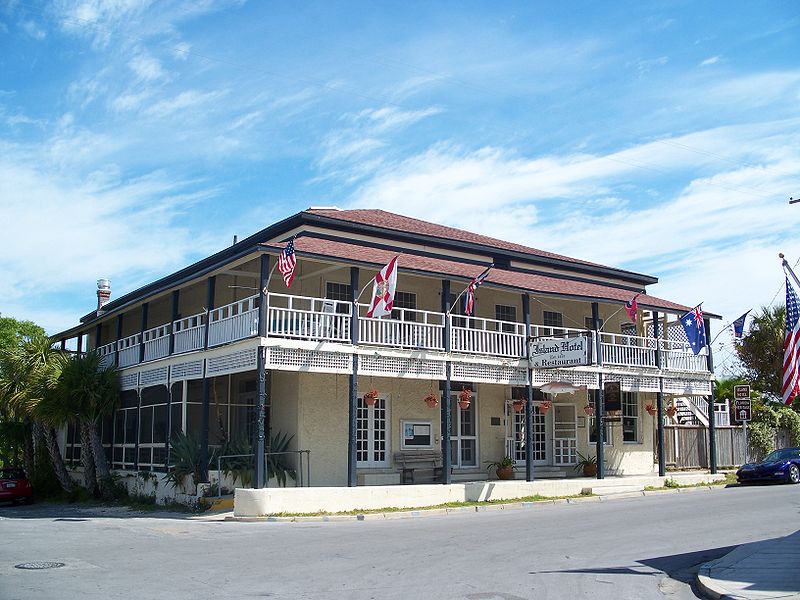
The building was built as a general store in 1860, the eve of the Civil War. In 1862, Cedar Key, at that time a small railroad town, became the first town in Florida to fall under Federal occupation. Some buildings were burned, but the general store was spared and quite possibly used as a barracks and warehouse for the occupying troops. After the war, the building returned to its commercial use as a general store and operated successfully until the collapse of the cedar industry and business began to slow. In 1915, the store was purchased by Simon Feinberg who converted the building into a hotel. It has served as a hotel, under a variety of owners, for the last hundred years.
According to a recent article in the Ocala Star-Banner, the spirit of a Confederate soldier has been quite active recently. Guests have spotted him standing guard throughout the upstairs portion of the hotel. Joining the soldier is a small African-American boy, possibly the spirit of a slave who legend holds drowned in a cistern on the property. Former owners, including Simon Feinberg and Bessie Gibbs still patrol the hotel checking up on guests to see that they are being taken care of.
Sources
- Allen, Rick. “Cedar Key offers island life, complete with ghosts and clams.” Ocala Star-Banner. 7 August 2014.
- “The History of the Island Hotel.” Island Hotel and Restaurant. Accessed 12 December 2014.
- “Island Hotel Ghost Stories.” Island Hotel and Restaurant. Accessed 12 December 2014.
- Jenkins, Greg. Florida’s Ghostly Legends and Haunted Folklore, Volume 3. Sarasota, FL: Pineapple Press, 2007.
- Lewis, Chad and Terry Fisk. The Florida Road Guide to Haunted Locations. Eau Claire, WI: Unexplained Research Publishing, 2010.
- Nolan, David and Micahel Zimny. National Register of Historic Places Nomination form for the Island Hotel. 1 October 1984.
Magnolia Springs State Park
1053 Magnolia Springs Road
Millen, Georgia
Of the many transgressions committed by both sides during the American Civil War, the neglect and contempt visited upon the prisoners of war looms large. Large-scale prisons were constructed and packed with prisoners who were underfed and sometimes virtually unclothed often under the open sky. Pestilence and lawlessness prevailed among the tightly packed men with death swooping among them picking off victims like a hawk.
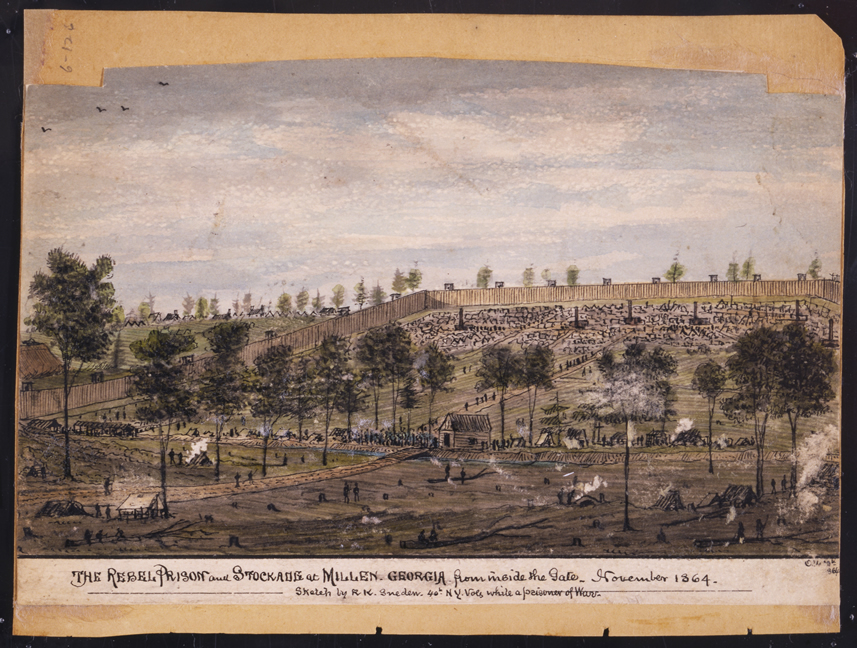
a Union soldier who was incarcerated here. Courtesy of the U.S.
Fish and Wildlife Service.
In this sordid history, Andersonville Prison in West Central Georgia is the most tragic tale and the prison’s site has been spiritually scarred with many spirits still roaming the piney landscape. While it was possibly the worst of these horrendous prisons, Andersonville is not the only one to mar the Southern landscape. Camp Lawton, near the eastern Georgia town of Millen, was one of the largest prison camps erected by the Confederates. Encompassing some 42 acres, the camp was constructed in 1864 and used for only three months.
It was built to house 40,000 prisoners but in its short lifespan only held about 10,000 prisoners in conditions that were far better than Andersonville. However, there were about 500 deaths in the camp during its service. When Sherman found the camp during his march from Atlanta to Savannah in 1864, he burned it to the ground along with Millen. The site of the camp is now part of Magnolia Springs State Park.
Employees have reported spirits in the park, particularly around one of the cabins occupied by park staff. One manager reported being awakened by a uniformed apparition standing at the end of his bed. Another staff member approached the cabin and saw a face peering out one of the windows at him when he knew the house was empty. At night, staff members have reported that they get the feeling of being followed or watched.
Sources
- Wilkinson, Chris. “Civil War Prisons.” New Georgia Encyclopedia. 9 September 2014.
- Miles, Jim. Civil War Ghosts of Central Georgia and Savannah. Charleston, SC: History Press, 2013.
Hayswood Hospital
West Fourth Street at Market Street
Maysville, Kentucky
The large Neo-Classical building crowns a hill above West Fourth Street and turns its face towards the majestic Ohio River beyond the city’s downtown. It’s obvious that the building has been long abandoned. Windows stand open like empty eye sockets while other closed windows hold broken panes that stare jaggedly towards the river. Along the first floor, plywood covers the windows and doors, a thin barrier to intruders, both human and natural.
Hayswood Hospital has endured a long jag of bad luck since its closure in 1983. Just last year, the building was almost sold to collect on a nearly $6,000 unpaid tax bill, but at the last minute, the sale was withdrawn. Nearly a decade after its closure, the building was purchased with the intent of renovating it into apartments, though that has fallen through. In 1999, a condemnation order was placed on the structure requiring the owner to either demolish or renovate the building, but nothing has come of that. The order still stands like a death sentence over a weary prisoner.
Not only is the crumbling building a blight on the city’s face, but asbestos and lead paint within the building are a danger to the health of the community. The blight also attracts vandals and thieves including the two men who were arrested in the building as they tried to steal copper wiring. In addition to the health dangers, the building’s falling ceilings and weak floors are a physical danger to the curious who decide to investigate the building.
With the constant stream of legends flowing forth from abandoned (and even not so abandoned) medical facilities, it’s no surprise to hear that Hayswood has many of its own stories. Nothing about the reports of apparitions and voices provided in the article from the blog Most Haunted Places in America is particularly unusual. The blog reports apparitions throughout the building including that of a woman holding a baby in the old maternity ward.
A video posted on YouTube on Halloween 2006 purportedly shows a spirit in the building. The very grainy video taken of the exterior of the building at night shows a white figure appearing in one of the windows. The videographer focuses in on the figure and it appears to take on the features of a very large face then quickly vanishes. Personally, something doesn’t really look right about the video, but I cannot positively describe it as fake.
The grand hospital was constructed in 1915 and served the community well. The 87 bed hospital was bought by Hospital Corporation of America (HCA) in 1981 and it was closed when a new facility was opened nearby. The building remains in its uneasy slumber awaiting its fate and comforted only by the occasional spirit from its past.
The Hayswood Hospital building is closed to visitors, trespassers will be prosecuted.
Sources
- Barker, Danetta. “Out of the hospital and into custody: Police make arrests at Hayswood.” The Ledger Independent. 22 September 2005.
- “The Haunted Hayswood Hospital.” Most Haunted Places in America. 18 June 2012.
- Maynard, Misty. “Video of ‘ghost’ at Hayswood Hospital getting planty of attention.” The Ledger Independent. 22 October 2007.
- Toncray, Marla. “For Sale: Hayswood Hospital.” The Ledger Independent. 22 March 2013.
- Toncray, Marla. “Hayswood sale plan halted.” The Ledger Independent. 26 April 2013.
Juju Road
Off of Swan Lake Road
Bossier City, Louisiana
Depending on the version of the legend, his crime ranged from simply looking at a white woman to the murder of two children who were simply fishing. Regardless, legend holds that he took his final breath somewhere along the road that still bears his name and possibly his lingering spirit. His name is said to be “Juju” or more properly “Juju Montgomery” in various versions of the legend, regardless, his name has been applied to this lonely country road outside Bossier City.
Like the countless cry baby bridges and haunted lovers lanes, the old dirt road is a popular hangout for local residents looking for a scare. Online accounts of the haunting describe people encountering the figure of an African-American man standing in the road or hanging from one of the trees with a rope around his neck.
Local paranormal enthusiasts, Marie Edgerly, her husband and son have formed a group called Louisiana Paranormal Addicts which explored Juju Road during the day. While they describe the location as “eerie,” they did not have any direct experiences with the spirit. Arriving home after their investigation, however, they were startled to discover a shadowy human form in one of their photographs from this location. Is it Juju?
Sources
- Edgerly, Marie. “Juju Road.” Louisiana Paranormal Addicts. 31 October 2014.
- Patton, Devon. “A Bossier Parish Ghost Story.” 29 April 2014.
Edgar Allen Poe House & Museum
203 Amity Street
Baltimore, Maryland
Of course the home to Baltimore’s favorite son of creepiness is haunted! Why would anyone think otherwise? When Vincent Price, one of the modern masters of creepiness, visited this house he said, “This house gives me the creeps.”
Edgar Allen Poe was born in Boston and lived intermittently in a number of cities including Baltimore where he would ultimately die in 1849. There are a few buildings where he lived that remain, including this small, unassuming house in Baltimore where Poe lived for about two years. The house had been rented by Poe’s aunt, Maria Clemm, in the spring of 1832 and was occupied by her daughter, Virginia, and his grandmother. Poe probably moved in the following year and he used the garret room at the top of the house for his writing. He would remain in these cramped quarters until 1835.
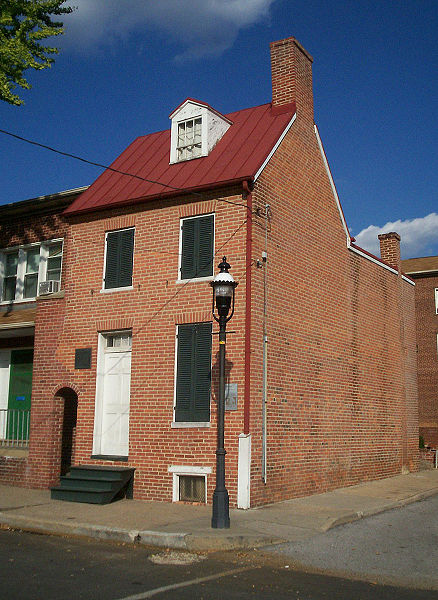
Over the years that the house has operated as a museum, some visitors have had unusual experiences, among them the feeling of being tapped on the shoulder by an unseen entity. In the mid-1980s, an actress preparing for a performance in the house had a scary encounter. As she was dressing, she noticed that the window sash was moving in the frame, then was shocked when the sash flew out of the frame and landed at her feet. A 2012 investigation by the Pennsylvania-based Ghost Detectives did turn up some odd voices on the team’s voice recorders.
Sources
- Hayes, Anthony C. “Ghost Detectives investigate ghostly voices inside the Edgar Allan Poe House.” Baltimore Post-Examiner. 16 July 2012.
- Hayes, Anthony C. “Is the Edgar Allan Poe House haunted?” Baltimore Post-Examiner. 11 May 2012.
- Hutchisson, James M. Jackson, MS: University Press of Mississippi, 2005.
- Mendinghall, Joseph S. National Register of Historic Places nomination form for the Edgar Allan Poe House. 11 November 1971.
- Okonowicz, Ed. Baltimore Ghosts: History, Mystery, Legends and Lore. Elkton, MD: Myst and Lace Publishers, 2006.
Kuhn Memorial Hospital
1422 Martin Luther King, Jr. Boulevard
Vicksburg, Mississippi
A Haunted Southern Book of Days–6 February
This article is a part of an occasional blog series highlighting Southern hauntings or high strangeness associated with specific days. For a complete listing, see “A Haunted Southern Book of Days.”
In a recent series on haunted Mississippi for Jackson, Mississippi’s The Clarion-Ledger, reporter Therese Apel remarks that she heard “completely improbable stories from completely sane people.” While researching for the series, Apel explored the deteriorating carcass of Kuhn Memorial State Hospital and had an improbable experience of her own. On the dusty top of an autopsy table a finger—possibly spectral—had spelled out “pleh,” the word “help” backwards.
The oldest part of this hospital was built in 1832 following an epidemic of smallpox that swept the area. In 1871, the state took over operations of the hospital rendering it a charity hospital for all those in need. During an outbreak of yellow fever in 1878, the dreaded mosquito-borne virus claimed the lives of some sixteen doctors and six Sisters of Mercy working here.
A modern wing was added to the building in 1959. The hospital faithfully served the citizens of Vicksburg and the surrounding area until the state cut funding and the hospital closed in 1989. The building has deteriorated under absentee owners for the past twenty-five years, visited only by urban explorers, filmmakers and ghost hunters. It was during a film shoot here that filmmakers may have unwittingly caught a voice exclaiming “oh my God,” upon the appearance of an evil clown, the film’s protagonist.
Further paranormal investigations of the facility have uncovered a plethora of voices in this most haunted of hospitals.
Sources
- Apel, Therese. “Creepy phenomena recorded at abandoned hospital.” The Clarion-Ledger. 30 October 2014.
- Apel, Therese. “Haunted Mississippi: Where are the most spiritually active places in the state?” The Clarion-Ledger. 22 September 2014.
- Associated Press. “Owner of former hospital given deadline.” Mississippi Business Journal. 29 September 2013.
- Russell, Randy. The Ghost Will See You Now: Haunted Hospitals of the South. Winston-Salem, NC: John F. Blair, 2014.
Stagville State Historic Site
5828 Old Oxford Road
Durham, North Carolina
While psychic and author Kala Ambrose was visiting Stagville as research for her book, Ghosthunting North Carolina, she took a moment, sat quietly and opened herself up in hopes of communicating with a spirit or two. Instead, she found herself thronged by them. She described it in her book, “the crowd of people was so large that I couldn’t see all of their faces. Instead, I felt the pressure of all of their bodies coming closer to me wanting to talk.”
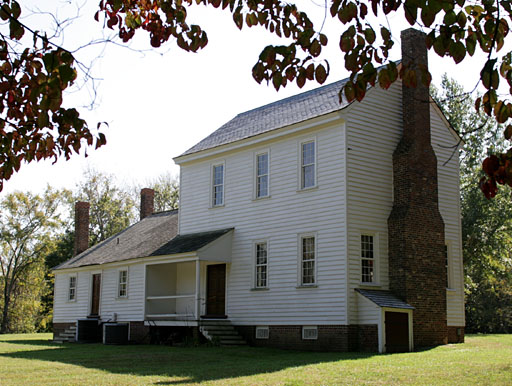
of Wikipedia.
One of the largest plantations in the South at its height, ghost stories have been a mainstay of Stagville Plantation for many years. Neighbors have reported strange lights on the property as well as screams in the night. The apparitions of an African-American girl and a group of African-American men have been reported near the Great Barn. The fire department has been summoned several times by reports of the slave quarters being ablaze. Upon arrival, there is no evidence of fire. Staff working in the remaining buildings have found that doors open and close and lock and unlock on their own. The site has been investigated by a number of groups who have captured a number of EVPs there.
The property itself has been the scene of much history. There is evidence of inhabitation by Native Americans and their possible burial on the site. Ambrose states that the remains of settlers have been found bearing evidence of attack from Native Americans. In the mid-19th century, this land was part of the huge holdings of the Bennehan and Cameron families and consisted of some 30,000 acres that were worked by some 900 slaves. Stagville State Historic Site preserves about 71 acres of the original plantation along with a number of remaining buildings and ruins.
Sources
- Ambrose, Kala. Ghosthunting North Carolina. Cincinnati, OH: Clerisy Press, 2011.
- Haunted North Carolina. “Historic Stagville.” Accessed 12 December 2014.
- McDonald, Glenn. “Go ghost hunting with Haunted NC.” Indy Week. 22 October 2014.
- Stagville. Wikipedia, the Free Encyclopedia. Accessed 12 December 2014.
Longstreet Theatre
Campus of the University of South Carolina
Columbia, South Carolina
The building housing the Longstreet Theatre at the University of South Carolina has seen a good deal of joy and a great deal of sorrow. According to the 1941 WPA guide to the state, the 1855 building has twice been pressed into service as a hospital: between 1862 and 1865 during the Civil War and then again in 1918 during the horrible influenza epidemic that swept the world. Legend holds that the room that is used as the theatre’s green room, where actors relax when they’re not onstage, was utilized as the hospital morgue during the Civil War.
To “ward off the Civil War ghosts,” according to a 2011 article from the student newspaper, The Daily Gamecock, students now employ a “buddy system” in the building. This may very well be a good idea as it seems that many of the reports of activity seem to stem from people who find themselves alone in the building. A secretary had her glasses “slapped off” her face as she walked through the building late one afternoon. “There was no one in the building but me, but I felt an impact on my face and my glasses flew off,” she told a reporter later.
A student was quoted as having a feeling of being watched while she was in the green room and then having the sensation of having “a wall of cold air being pushed across and around her.” Other students tend to get a very creepy feeling or even feel vibrations within the ancient structure. However, most students and professors take the spirits in stride. Alan Brown quotes a theatre professor, “I love to tease students and tell them the ghosts are real friendly unless you’re a Yankee.”
Sources
- Brown, Alan. Haunted South Carolina. Mechanicsburg, PA: Stackpole Books, 2010.
- Carmichael, Sherman. Eerie South Carolina. Charleston, SC: History Press, 2013.
- Ellis, Sarah. “Ghost tours highlight USC’s haunted history.” The Daily Gamecock. 28 October 2011.
- Kearns, Taylor. “The phantom of Longstreet Theatre?” Carolina Reporter & News. No date.
- Mitchell, Wes. “Ghosts and legends plentiful on USC campus.” Carolina Reporter & News. No date.
- Steimle, Douglas. “The Ghosts of Longstreet Theatre.” com. 31 October 2011.
- Workers of the Writers’ Program of the WPA. South Carolina: A Guide to the Palmetto State. NYC: Oxford University Press, 1941.
Baker-Peters Jazz Club
9000 Kingston Pike
Knoxville, Tennessee
This entry has been reposted as a separate entry, “Spirits and Smooth Jazz–Knoxville, Tennessee.”
Graffiti House
19484 Brandy Road
Brandy Station
It’s not hard to imagine that soldiers throughout the Civil War began to quickly feel their own mortality. As they lay wounded in the homes and taverns, churches and barns that had been hastily converted into hospitals throughout the nation, many scratched their names into adjacent plaster walls and floorboards, perhaps in hopes of gaining some type of immortality. With so much of this graffiti obliterated by the buildings caretakers and time, these exercises into immortality have become increasingly rare, despite their importance to historians and the residents of the modern age.

Built near a small railroad stop on the Orange & Alexandria Railroad, Graffiti House was built by James Barbour in 1858 as a residence and possible commercial building. As battles raged around Virginia, Mr. Barbour’s building was converted into a hospital and the patients began to scrawl on the walls of the structure. In June of 1863, the war that had been trickling into the community until then arrived as a deluge when Brandy Station was the scene of the largest cavalry battle fought on American soil.
The graffiti was only rediscovered in the early 1990s and the building was later purchased by the Brandy Station Foundation, an organization devoted to preserving the local battlefield and associated sites. But it’s not just graffiti that remains in the building, spirits are still active as well. A handful of paranormal investigation organizations have investigated Graffiti House and captured evidence.
A reporter from The Free Lance-Star in nearby Fredericksburg in 2007 observed a paranormal investigation by the Virginia Paranormal Institute. About an hour into the investigation he was apparently touched by something while an investigator had something grab her hand. During a more recent investigation by Transcend Paranormal, video of an anomalous light in an empty room was captured. The video is available on YouTube.
Sources
- Johnston, Donnie. “What was that touching my back?” The Free Lance-Star. 23 November 2007.
- Neville, Ashley and John S. Salmon. National Register of Historic Places Nomination form for Graffiti House. June 2005.
- Transcend Paranormal. “Transcend Paranormal: Graffiti House Light Anomaly.” 18 November 2011.
West Virginia Turnpike–Interstate 77
Between Princeton and Charleston, West Virginia

This article has been revised and expanded in “Turnpike Terror–West Virginia.”
